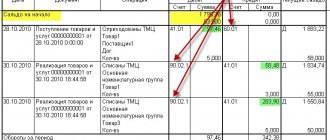When creating your own business, you must follow a number of sequential actions, the order of which is monitored by the relevant authorities. Today, you can prepare everything you need either independently or with the help of legal services. You can pay a certain amount, and in a short time a team of lawyers will prepare the entire package of documents without unnecessary fuss.
To create your own business, it is necessary to resolve a number of issues, without which no enterprise can function, no matter what form of ownership it represents.
One of the first tasks that needs to be solved first is to form an authorized capital.
What is authorized capital
Authorized capital is a certain amount of money or cash equivalent, which allows investors to be compensated for the costs of the organization's activities in case of failure. The amount of capital depends on the type of economic activity of a given company and has a certain meaning.
Capital can be expressed not only in money, but also in the form of real estate, shares, and material assets. Since the organization’s bank account is opened at the initial stage, half of the total amount of the authorized capital is deposited into it during the first month.
52Accounting for additional and reserve capital
Extra capital
— capital gain of an enterprise resulting from the revaluation of fixed assets and share premiums.
Accounting for additional capital is carried out on passive account 83 “Additional capital”.
By loan
Account 83 “Additional capital” is reflected:
1. the increase in the value of non-current assets, revealed by the results of their revaluation - in correspondence with the asset accounts for which the increase in value was determined;
2. the amount of the difference between the sale and par value of shares, received in the process of forming the authorized capital of a joint-stock company (upon the establishment of the company, with a subsequent increase in the authorized capital) through the sale of shares at a price exceeding the par value - in correspondence with account 75 “Settlements with founders."
Amounts credited to account 83 “Additional capital” are, as a rule, not written off. Debit
entries on it can only take place in the following cases:
1. repayment of amounts of decrease in the value of non-current assets revealed as a result of its revaluation - in correspondence with the asset accounts for which the decrease in value was determined;
The concept of reserve capital
Reserve capital is a certain part of the main authorized capital, from 5 to 25% - depending on the type of organization. Its amount is specified in the company's charter, the creation of which is mandatory.
Reserve capital is intended for storing part of the profit received and its subsequent distribution for the purchase of shares, as well as repaying debts, if any. The tradition of creating reserve capital originates from Western practice, where it has long been customary to protect one’s business from financial insolvency.
Not all organizations require capital reserves. For example, a limited liability company and individual entrepreneurship are not required to create such capital, but for a joint stock company this is mandatory.
Lecture 16. Accounting for capital, reserves and target financing
Accounting for authorized capital
The authorized capital is the main source of formation of the organization's own capital. Depending on the organizational and legal forms of organizations, authorized capital can be in several types: authorized capital (joint-stock companies and LLCs), share capital (full partnership and limited partnership), authorized capital (state and municipal unitary organizations), mutual fund (industrial cooperatives).
The authorized capital is the totality of contributions in monetary terms (shares, shares at par value) of the founders (participants) to the property of the organization upon its creation to ensure activities in the amounts determined by the constituent documents.
Share capital is the totality of contributions of participants in a general partnership or limited partnership contributed to the partnership for the implementation of its economic activities.
State and municipal unitary organizations form an authorized capital - this is a set of fixed and working capital allocated to the organization by the state or municipal authorities.
A mutual fund is a set of share contributions of members of a production cooperative for joint business activities, as well as the value acquired and created in the process of activity.
According to the Federal Laws “On Joint Stock Companies” and “On Limited Liability Companies”, the size of the authorized capital of an OJSC must be at least 1000 times the minimum wage, and a CJSC must be at least 100 times the minimum wage established by law on the date of submission of constituent documents for registration . For an LLC, the minimum authorized capital is 10,000 rubles.
The maximum number of participants in an LLC is no more than 50 people. If this number is exceeded, the LLC must be transformed into an OJSC or production cooperative.
The authorized capital of an OJSC, CJSC or LLC, recorded in the constituent documents, must be paid at least 50% by the time of registration of the company. The remaining part of the authorized capital is paid within a year from the date of its registration.
Net assets are a value determined by subtracting from the amount of assets of a joint stock company accepted for calculation the amount of its obligations (liabilities) accepted for calculation.
(Net assets are that part of the property that will be at the disposal of the founders after the liquidation of the company (after repayment of all obligations) or net assets show the actual value of the company’s property).
To estimate the value of net assets, a calculation is made based on the balance sheet data. Net asset value is calculated quarterly and at the end of the year and is shown in the interim and annual financial statements.
Accounting for authorized and share capital, authorized and share funds is carried out on passive account 80 “authorized capital”. The credit of this account reflects the formation of the authorized capital, and the debit reflects its decrease.
The balance of this account must correspond to the amount of the authorized capital recorded in the constituent documents of the organization.
Entries in account 80 are made when forming the authorized capital, as well as in cases of increasing and decreasing capital, only after making appropriate changes to the constituent documents of the organization.
After the state registration of an organization, its authorized capital in the amount of deposits of the founders (participants) provided for by the constituent documents is reflected on the credit of account 80 in correspondence with account 75. The actual receipt of deposits of the founders is recorded on the credit of account 75 in correspondence with the accounts for accounting for cash and other valuables .
Analytical accounting for account 80 is organized in such a way as to ensure the formation of information on the founders of the organization, stages of capital formation and types of shares.
Account 80 is also used to summarize information about the status and movement of contributions to common property under a simple partnership agreement. In this case, account 80 is called “Comrades' Contributions”.
The property contributed by the partners to the simple partnership on account of their contributions is accounted for in the debit of the property accounting accounts (51, 01, 41, etc.) and the credit of account 80. When property is returned to the partners upon termination of the simple partnership agreement, reverse entries are made in accounting.
1. The amount of the authorized capital and the debt of the founders to pay for it are reflected: D-t account. 75 Set count. 80
2. Funds contributed by the founders towards the contribution to the authorized capital: D-t account. 50,51,52 Set count. 75
3. The founders contributed fixed assets, intangible assets and other property as a contribution to the authorized capital: D-t account. 08,10,58 Set of accounts. 75
4. The increase in the authorized capital at the expense of shareholders’ funds is reflected (for the amount of the issue of additional shares or the admission of new founders):
D-t sch.75 K-t sch. 80
5. The increase in the authorized capital due to the additional capital (retained earnings) of the company is reflected: Dt account 83.84 Set account. 80
6. The decrease in the authorized capital is reflected if it is not fully paid within a year after registration of the company: D-t account 80 K-t account. 75
7. The decrease in the authorized capital is reflected in order to bring it into line with the size of the company’s net assets: Dt account 80 Kt account. 84
8. The decrease in the authorized capital due to the cancellation of shares (stakes) purchased from shareholders (participants) is reflected:
Dt count.80 Set count. 81 “Own shares (shares)”
Accounting for reserve capital
Reserve capital is mandatory created by joint-stock companies and organizations with foreign capital participation. Other organizations can create it at their own discretion, if so provided by the charter.
In joint-stock companies (CJSC, OJSC), the amount of reserve capital must be at least 5% of the authorized capital of the joint-stock company (in joint organizations up to 25%).
Joint-stock companies must annually contribute at least 5% of net profit to reserve capital. Contributions cease when the reserve capital reaches the amount determined by the charter.
Joint-stock companies may spend reserve capital funds to cover losses for the reporting year; repayment of bonds and repurchase of company shares if other means are insufficient for this.
Limited liability companies can spend reserve capital funds both to cover losses and for other purposes provided for by their charters. There are no legal restrictions on the use of reserve capital funds for LLCs.
Accounting for reserve capital is carried out on passive account 82 “Reserve capital”, which is intended to summarize information about the state and movement of reserve capital. The credit of this account reflects the formation of reserve capital, and the debit reflects its use.
The amount of reserve capital is reflected separately in the balance sheet:
reserves formed in accordance with legislation;
reserves formed in accordance with the constituent documents.
Reserve capital is formed from the organization's retained earnings.
1. Net profit is used to form reserve capital:
Dt sch. 84 Set count. 82
2. Reserve capital funds are used to cover the organization’s loss for the reporting year:
Dt sch. 82 Set count. 84
3. Reserve capital funds are used to repay the bonds of the joint stock company:
Dt sch. 82 Set count. 66.67
Formation of reserve capital
The amount of reserve capital is not accumulated immediately, but over a certain period of time. Reserve capital is formed at the expense of the organization's profits, while part of the net profit is transferred to the reserve capital fund until the amount specified in the authorized capital is received. In order to obtain the amount for deduction to the fund, they reduce the net profit, that is, they use part of the profit after paying the necessary taxes.
In addition to the fact that there is a mandatory part of the profit that goes to the formation of the reserve (established both by law and by the charter of the enterprise), there are other sources of replenishment of the reserve fund. These are estimated reserves, according to estimates by the management of the enterprise, minus expected expenses and income (subject to the stability of the production process).
Speaking about the accounting side of this part of the budget, it is worth saying that the concept of reserve capital - accounting entries - is associated with a separate account that has a similar name. Reserve capital, the account of which is 82, allows you to control settlement transactions for this part of the budget.
The amount of annual receipts to the reserve fund must be a share of more than or equal to 5% of the net profit from the activities of the enterprise.
The amount of reserve capital can be used to judge how firmly an enterprise feels in the financial market, its success and profitability.
How to formalize and reflect in accounting the formation of reserve capital - Tax Review.Info
Reserve capital is formed by the organization through the formation of reserves in accordance with the law and constituent documents (clause 69 of the Regulations on Accounting and Reporting, clause 20 of PBU 4/99).
Components of reserve capital
The components of reserve capital in an organization, depending on its organizational and legal form, can be:
- special fund for the corporatization of employees (clause 2 of article 35 of the Law of December 26, 1995 No. 208-FZ);
- special funds for paying dividends on preferred shares (clause 2 of article 42 of the Law of December 26, 1995 No. 208-FZ), etc.
Creation of a reserve fund
In practice, in organizations the main part of the reserve capital is the reserve fund. The reserve fund can be created either compulsorily or voluntarily.
The mandatory procedure for creating a fund is established by law regulating the activities of an organization of one or another legal form.
At the same time, as a rule, the law also determines the general procedure for the formation and use of the fund: the minimum size of the fund and contributions to it, the sources from which the fund is created, the purposes for which it is spent.
The organization must establish specific rules (not contradicting the requirements of the law) in the constituent documents (charter) of the organization.
Joint-stock companies, in particular, are required to create a reserve fund. They can do this only at the expense of the organization’s net profit. This follows from paragraph 1 of Article 35 of the Law of December 26, 1995 No. 208-FZ.
A voluntary procedure presupposes the right of an organization to create or not to create a reserve fund. At the same time, the organization independently establishes the procedure for its formation in the constituent documents (charter) of the organization.
On a voluntary basis, a reserve fund is formed, for example, by an LLC (Clause 1, Article 30 of the Law of February 8, 1998 No. 14-FZ).
For more information on the procedure for forming a reserve fund in organizations of various organizational and legal forms, see the table.
If the law regulating the activities of an organization does not mention the possibility of creating a reserve fund, either mandatory or voluntary, this does not deprive the organization of the right to establish a corresponding provision in its constituent documents.
The sources of formation of the reserve fund can be:
- deductions from the organization’s net profit;
- contributions of members (shareholders), etc.
Replenish the reserve fund until the fund is fully formed (i.e., in the amount established in the organization’s constituent documents). After this, contributions (contributions, contributions, etc.) to the reserve fund may temporarily not be made.
When the reserve fund is spent, its size becomes less than the established value. In this case, resume replenishing the reserve fund until its size meets the requirements of the law and (or) constituent documents.
Organizations that are required to create a reserve fund can use it only for strictly defined purposes. Organizations that create a fund voluntarily, as a rule, can use it for any purpose specified in the constituent documents (charter).
Situation: is it possible to change the size of the reserve fund originally fixed in the organization’s charter?
Answer: yes, you can.
The procedure for the formation (including the size) of the reserve fund is approved by the competent body of the organization and is enshrined in its constituent documents (charter) (see, for example, paragraph 1 of Article 35 and paragraph 3 of Article 11 of the Law of December 26, 1995 No. 208-FZ, paragraph 1 of Article 30 and paragraph 2 of Article 12 of the Law of February 8, 1998 No. 14-FZ).
For example, in a joint stock company such powers are vested in the general meeting of shareholders. In an LLC - a general meeting of participants.
Therefore, in order to change the size of the reserve fund, initially fixed in the charter, such a competent body must decide to increase (decrease) it and, on the basis of this decision, make appropriate changes to the constituent documents (see, for example, paragraph 1 of Article 12 and sub. 1 paragraph 1 article 48 of the Law of December 26, 1995 No. 208-FZ, paragraph 4 article 12, subparagraph 2 paragraph 2 article 33 of the Law of February 8, 1998 No. 14-FZ).
However, it must be taken into account that in organizations that compulsorily form a fund, as a rule, the minimum size of the reserve fund is legally established. For example, in joint-stock companies, the reserve fund cannot be less than 5 percent of the authorized capital (clause 1, article 35 of the Law of December 26, 1995 No. 208-FZ).
In accounting, reflect the formation of the reserve fund in the credit of account 82 “Reserve capital”. The corresponding account, as well as the documents on the basis of which the accounting entry is made, depend on the source of the fund’s formation.
In the financial statements, reflect information about the reserve fund:
- in the Balance Sheet. For more details, see the table;
- in the Statement of Changes in Equity. For more information about this, see the table.
This follows from paragraphs 5, 20, 30 of PBU 4/99.
Formation of a reserve fund from net profit
If the reserve fund is formed at the expense of the organization’s net profit (for example, such a source of fund formation is mandatory for joint-stock companies), then its creation (replenishment) should be reflected in accounting by posting:
Debit 84 Credit 82
– deductions were made to the reserve fund from retained earnings.
This follows from the Instructions for the chart of accounts (accounts 82, 84).
Make the posting on the basis of an accounting certificate in which you provide the calculation of contributions to the reserve fund (Part 2 of Article 9 of the Law of December 6, 2011 No. 402-FZ).
An additional decision of the general meeting of participants (shareholders) of the organization on the direction of net profit to the reserve fund is not required.
Since if an organization creates it (by force of law or voluntarily), then the obligation and procedure for forming the fund are fixed in the constituent documents (charter) of the organization. Therefore, owners are not required to regularly confirm a previously made decision.
This conclusion follows, for example, from paragraph 1 of Article 35 of the Law of December 26, 1995 No. 208-FZ (for joint-stock companies), paragraph 1 of Article 30 of the Law of February 8, 1998 No. 14-FZ (for LLCs).
Since an additional decision of the general meeting of participants (shareholders) on the transfer of net profit to the reserve fund is not required, make accounting entries in the year in which the profit was received.
An example of how annual contributions to the reserve fund from the organization’s net profit are reflected in the accounting records of a joint stock company
The authorized capital of CJSC Alpha is 100,000 rubles. In accordance with the company's charter, the reserve fund must be 10 percent of the authorized capital, that is, 10,000 rubles. (RUB 100,000 × 10%). Annual contributions to the formation of a reserve fund are 6 percent of net profit. As of January 1, the size of the reserve fund is 8,000 rubles.
This year, Alpha's net profit amounted to 50,000 rubles. Thus, the amount of annual contributions to the reserve fund this year should be 3,000 rubles. (RUB 50,000 × 6%).
However, since only 2000 rubles are missing before reaching the value of the reserve fund provided for by the company's charter. (10,000 rub. – 8,000 rub.
), contributions to the reserve fund will amount to exactly this amount (2000 rubles).
The accountant reflected the calculation of contributions to the reserve fund in the accounting certificate.
In December, the accountant made an entry in Alpha’s accounting:
Debit 84 Credit 82 – 2000 rub. – contributions have been made to the reserve fund in the amount necessary to complete its formation.
Regardless of the chosen taxation system, the formation of a reserve fund from the organization’s net profit does not affect the calculation of taxes.
Since this does not generate expenses that can be taken into account for taxation (see, for example, Article 252 of the Tax Code of the Russian Federation, determination of the Supreme Arbitration Court of the Russian Federation dated August 12, 2008
No. 9690/08, resolution of the Federal Antimonopoly Service of the West Siberian District dated April 7, 2008 No. F04-2259/2008(3199-A27-15)).
Formation of a reserve fund through contributions
Most non-profit organizations (incl.
credit, agricultural, consumer and housing savings cooperatives) are required to create a reserve fund, including through contributions from their members (shareholders) (clause 16, part 3, article 1, clause 1, part.
4 tbsp. 6 of the Law of July 18, 2009 No. 190-FZ, paragraphs 6–7 art. 34 of the Law of December 8, 1995 No. 193-FZ, part 1 of Art. 53 of the Law of December 30, 2004 No. 215-FZ).
Contributions received from members (shareholders) are initially recognized as targeted and accounted for in the credit of account 86 “Targeted financing”. To control the debt of members (shareholders), you can use account 76 “Settlements with various debtors and creditors”. Make the following entries in your accounting:
Debit 76 Credit 86
– reflects the debt of members (shareholders) to make contributions to the reserve fund;
Debit 55 (50, 51) Credit 76
– contributions from members (shareholders) to the reserve fund have been received;
Debit 86 Credit 82
– contributions of members (shareholders) were sent to the reserve fund.
This follows from the Instructions for the chart of accounts (accounts 82 and 86).
Make entries on the basis of documents confirming the debt of members (shareholders) for contributions to the reserve fund, and documents confirming the transfer of these contributions (Part 2 of Article 9 of the Law of December 6, 2011 No. 402-FZ).
If an organization applies a general taxation system (simplified), then do not include received membership (share) contributions in taxable income.
Such amounts are recognized as targeted revenues for the maintenance of non-profit organizations and the conduct of their statutory activities and are not taken into account when calculating income tax (single tax).
This follows from subparagraph 1 of paragraph 2 of Article 251 and subparagraph 1 of paragraph 1.1 of Article 346.15 of the Tax Code of the Russian Federation.
Source: https://NalogObzor.info/publ/uchet_i_otchetnost/uchet_kapitala/kak_oformit_i_otrazit_v_uchete_formirovanie_rezervnogo_kapitala/39-1-0-1010
Use of reserve capital
There is a list of expenditure transactions for which reserve capital can be spent:
- In the absence of profit, you can use reserve capital to pay income on company shares and bonds.
- In the event that there are no fixed assets for production, reserve capital is used to cover the needs associated with the sale of goods and the provision of services.
- Reserve capital can be used to pay off debts, loans and pay off arrears, and if necessary, the authorized capital is replenished from this fund and various payments are made that are not provided for by the organization’s budget.
- If the enterprise’s profit is sufficient, then the reserve capital can be used in the form of a bank deposit for a short period.
If an organization wants to reduce its authorized capital, this can be done by purchasing bonds and shares from shareholders with their subsequent redemption, for which it is also allowed to use funds from the reserve fund.
Features of accounting with authorized reserve capital: postings
Account 82.
Article 35 of the Law on Joint-Stock Companies indicates the directions in the form of a list where funds contained in the reserve capital are allowed to be directed. For example, it is prohibited to use it to pay dividends.
At the same time, the legislation mentions that the reserve fund itself is often compiled by several funds, for the formation of which money is deducted from what is called net profit.
Read about the procedure for forming reserves for debts on this page.
200 thousand – total profit for the reporting period. 500 thousand rubles are in a special fund. Finally, 350 thousand rubles are equal to the company’s obligations associated with the obligation to pay dividends to those who have preferred shares.
1. Debit 84. Credit 75.
200 thousand rubles - to indicate net profit, which is used to receive dividends by holders of preference shares.
2. Debit 82. Credit 75.
150 thousand rubles - the amount from which the special fund is formed is also used to pay those who purchased this type of shares.
3. Using the funds in a special fund, it is possible to pay all dividends associated with those who have a certain number of shares of the preferred group. In the same example, we write off the entire amount of 350 thousand, it is written off from the debit of account 82. For other purposes, payments on ordinary shares, we direct the net profit received for a certain period.
Formation of authorized capital in enterprises of various types.
Reserve capital for various types of property
The formation of a reserve for various types of economic activity has its own characteristics. The reserve capital of a joint stock company is formed in the amount of at least 5% of the authorized capital. If a foreign investment contribution is involved in the organization’s activities, the amount of the reserve increases to 25%. At the same time, joint stock companies also have a minimum threshold for the value of the reserve fund.
Every year it is necessary to deposit a certain amount, the minimum is 5% of net profit, while the minimum transfers are determined by law. It is for this type of activity that the intended purpose of reserve capital is determined.
For a joint stock company and a joint venture, the creation of a reserve is mandatory; for individual entrepreneurs and a limited liability company this is not necessary, therefore you can spend the funds accumulated in the reserve at your own discretion.
Characteristics of account 82
Accounting for reserve capital (hereinafter referred to as RK) is maintained using account 82, designed to collect all information about the state and movement of this type of capital.
To account for the formation of reserve capital, account 82 corresponds with account 84. In special cases, account 82 corresponds with account 75, for example, when forming the Republic of Kazakhstan in non-profit organizations and agricultural enterprises. In order to reflect operations on the use of accumulated reserve capital, the account corresponds with accounts 66 (67).
By studying the features of account 82, you can create the following characteristics of it. This is the account:
- passive, since with its help the sources of the enterprise’s property are taken into account; RK is one of the components of the capital of a joint-stock company and, like all sources of assets, is reflected in the liability side of the balance sheet;
- balance sheet, because its indicators are reflected in the balance sheet;
- stock, since it is intended to account for the sources of formation of funds belonging to the joint-stock company - the capital of the company;
- the main one, because it is intended to control the state and movement of sources of formation of the company’s property (in this case).
We suggest that you familiarize yourself with the accident in the absence of compulsory insurance at the culprit.
You can read about the sources of capital formation in our article “Main sources of formation of equity capital.”
Control over the formation of reserve capital
For a joint stock company, at the end of each year it is mandatory to provide financial statements on the company’s activities, so you can easily determine the amount of transfers to the reserve fund and the use of funds from it.
Since reserve capital is formed from the profits of the organization to which shareholders and investors are related, the distribution of profits (including the use of reserve capital) must be agreed upon at a meeting of shareholders.
An accounting report on the organization's activities is provided after the reporting period, which may raise the question of how the budget plan for the next year is laid out. To resolve this issue, an organizational meeting of shareholders is held, where reporting documentation is provided. At the same time, reserve planning for the next reporting period occurs.
Reflection of additional capital in financial statements
All information about the presence and movement of additional capital can be seen in special reporting form No. 3, called “Report on changes in capital,” which is an appendix to Forms 1 and 2 of the enterprise’s final reporting.
This report reflects the growth and decrease of each point of equity capital, including additional capital. The document contains 3 sections:
- information on capital flows;
- information about adjustments to the amount of capital due to errors made or changes in accounting policies;
- information on the value of net assets to determine their liquidity.
Additional capital - an asset or liability on the balance sheet {q} Understanding this is not so difficult. In the balance sheet, a separate line of the same name is provided for it, line 1350 “Additional capital (without revaluation).” It is located in the Capital and reserves section, and its data corresponds to the credit balance of account 83, minus revaluation amounts.
The movement of additional capital during the reporting period is reflected in the Statement of Changes in Capital (Appendix No. 2 to Order of the Ministry of Finance of Russia dated July 2, 2010 N 66n), as well as on line 2510 of the Statement of Financial Results - regarding the revaluation of non-current assets.
The state of the reserve fund formed in the company must be reflected in the financial statements as a separate line: line 1360 of the balance sheet - credit balance on account 82. Any changes (replenishment and expenditure of funds from the fund) are recorded in the statement of capital flows.
Increasing the amount of reserve capital
The rules do not prohibit increasing the amount of reserve capital, and this can be done at any stage, even until the amount of reserve capital reaches the threshold of 5%.
The size of the reserve can be increased by holding a meeting of shareholders and making this decision. After this, all changes must be made to the charter.
There is a relationship between the value of reserve and authorized capital, so it must be taken into account that when increasing the amount of reserve capital, it is necessary to increase proportionally the amount of total (authorized) capital.
52Accounting for additional and reserve capital
Additional capital
is an increase in the capital of an enterprise resulting from the revaluation of fixed assets and share premiums.
Accounting for additional capital is carried out on passive account 83 “Additional capital”.
By loan
Account 83 “Additional capital” is reflected:
1. the increase in the value of non-current assets, revealed by the results of their revaluation - in correspondence with the asset accounts for which the increase in value was determined;
2. the amount of the difference between the sale and par value of shares, received in the process of forming the authorized capital of a joint-stock company (upon the establishment of the company, with a subsequent increase in the authorized capital) through the sale of shares at a price exceeding the par value - in correspondence with account 75 “Settlements with founders."
Amounts credited to account 83 “Additional capital” are, as a rule, not written off. Debit
entries on it can only take place in the following cases:
1. repayment of amounts of decrease in the value of non-current assets revealed as a result of its revaluation - in correspondence with the asset accounts for which the decrease in value was determined;
Accounting statements for reserve capital
The transfer of funds to the fund, as well as the expenditure of money from the fund to cover needs and debts, must be reflected in the accounts for uncovered losses, as well as for long-term and short-term loans.
Thus, one of the mandatory conditions for the formation of a joint stock company or joint venture is the formation of the main authorized and reserve capital. There are certain rules for creating a reserve fund, which are regulated by law. The receipt and expenditure of funds from the reserve fund should be reflected in the accounting documentation, as well as budget planning for the next year.
Results
All operations carried out related to changes in reserve capital on account 82 are displayed both as credit and debit. The receipt of funds (replenishment of the Republic of Kazakhstan) is shown as a credit to this account, and the use of funds is shown as a debit.
According to the Chart of Accounts approved by the Ministry of Finance, it is assumed that the “Reserve Capital” account corresponds only with accounts 66 (67) and 84. In some cases, it is practiced to use an entry with account 75 when forming a capital account from contributions of shareholders, founders of non-profit organizations.
You will find more information on the use of accounting accounts in our article “Instructions for the chart of accounts for 2015.”
When should you create a reserve fund in an LLC?
The reserve fund of an LLC is required if its creation is specified in the company's charter. Unlike joint-stock companies, for which the formation of an appropriate fund is a procedure prescribed by law, in LLCs such structures are established voluntarily. The charter reflects information about the size of the fund, the rules for its formation (for example, it can be carried out through deductions from the profit of the company in accordance with the decisions of the founders at the general meeting).
Separate provisions of the charter or documents supplementing it in terms of regulating the use of the fund in question (such a document could be, for example, a regulation on the reserve fund of an LLC) may also establish:
- the procedure for changing the size of the fund;
- the procedure for spending money in the fund;
- internal corporate reporting forms for replenishment and expenditure of funds.
Let us now study how the fund in question in an LLC can be spent.
Reserve capital - an asset or a liability?
The company's capital and reserves are considered its liabilities, so it is logical that reserve capital, as a component of equity capital, is, of course, a liability.
In addition, in accounting, information about the state and movement of reserve capital is summarized in account 82, which is also passive.
Reserve capital is intended to accumulate part of net retained earnings, which will subsequently be spent primarily on covering losses.
You will receive more information about liabilities and assets when studying the article “Balance Sheet (Assets and Liabilities, Sections, Types).”









